Oxbow Books is a leading publisher in the fields of archaeology, ancient history and medieval studies, with an international reputation for quality and affordability. Oxbow's archaeology publishing covers all periods from earliest prehistory through classical archaeology, the ancient Near East, Egyptology, the Middle Ages and post-medieval archaeology. They publish a wide variety of books including scholarly monographs, edited collections of papers, and excavation and research reports in related fields such as archaeological practice and theory, archaeozoology, and environmental, landscape and maritime archaeology.
Founded in Oxford in 1983 by academic and museum archaeologist, David Brown, Oxbow Books has evolved and expanded significantly over the years. Now celebrating their 40th anniversary, Oxbow remains dedicated to the quality of their publishing for readers, and the contribution their books bring to the scholarly and professional communities more broadly.
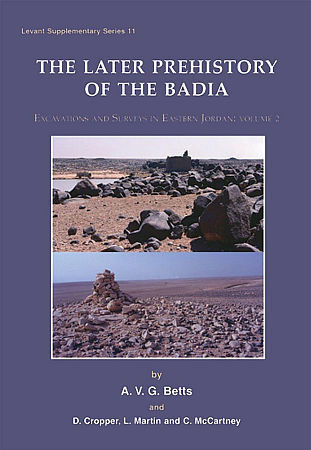
Format: Hardback
Pages: 240
ISBN: 9781842174739
Pub Date: 03 May 2013
Series: Levant Supplementary Series
Description:
The Jordanian badia is an arid region that has been largely protected from modern development by its extreme climate and has preserved a remarkably rich record of its prehistoric past. This is the second of two volumes to document extensive surveys and excavations in the region from Al-Azraq to the Iraqi border over the period 1979-1996. Broadly, it covers the Late Neolithic and Chalcolithic of the eastern badia.
Over time, an outline prehistory of the region has emerged. Late Epipaleolithic campsites have been found in the north-west of the harra in the foothills of Jebel Druze, while the central basalt region saw a floruit of activity in the late Aceramic Neolithic, when it was used extensively for hunting. This volume covers the following period, which witnessed a further spread of campsites and short-term occupation out around the edges of the harra and across the hamad as far as the lands bordering the Euphrates to the north and east. This period was marked by the first appearance of sheep and goat as one element of the steppic economy alongside traditional practices of hunting and foraging. The concluding chapter discusses these changes and proposes models for the introduction of domesticated animals into the steppe as a precursor to a full nomadic pastoral economy.
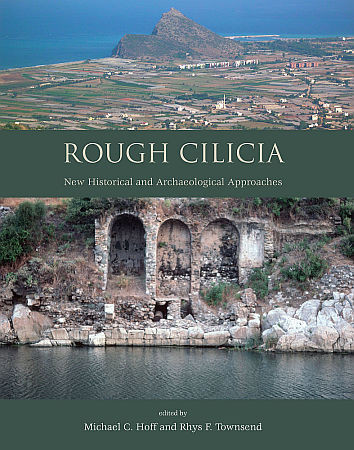
Format: Hardback
Pages: 320
ISBN: 9781842175187
Pub Date: 03 May 2013
Illustrations: 260 col illus.
Description:
The region of Rough Cilicia (modern area the south-western coastal area of Turkey), known in antiquity as Cilicia Tracheia, constitutes the western part of the larger area of Cilicia. It is characterised by the ruggedness of its territory and the protection afforded by the high mountains combined with the rugged seacoast fostered the prolific piracy that developed in the late Hellenistic period, bringing much notoriety to the area. It was also known as a source of timber, primarily for shipbuilding.
The twenty-two papers presented here give a useful overview on current research on Rough Cilicia, from the Bronze Age to the Byzantine period, with a variety of methods, from surveys to excavations. The first two articles (Yağcı, Jasink and Bombardieri), deal with the Bronze and Iron Ages, and refer to the questions of colonisation, influences, and relations. The following four articles (Tempesta, de Souza, Tomaschitz, Rauh et al.) concern the pirates of Cilicia and Isauria who were a big problem, not only for the region but throughout the Mediterranean and Aegean during the late Hellenistic and especially Roman periods. Approaching the subject of Roman Architecture, Borgia recalls Antiochus IV of Commagene, a king with good relations to Rome. Six papers (Spanu, Townsend, Giobbe, Hoff, Winterstein, and Wandsnider) publish work on Roman architecture: architectural decoration, council houses, Roman temples, bath architecture, cenotaph, and public buildings. Ceramics is not neglected and Lund provides a special emphasis on ceramics to demonstrate how pottery can be used as evidence for connections between Rough Cilicia and northwestern Cyprus. Six contributions (Varinliog(lu, Ferrazzoli, Jackson, Elton, Canevello and Özy?ld?r?m, Honey) deal with the Early Christian and Byzantine periods and cover rural habitat, trade, the Kilise Tepe settlement, late Roman churches, Seleucia, and the miracles of Thekla. The final article (Huber) gives insight into methods applied to the study of architectural monuments.
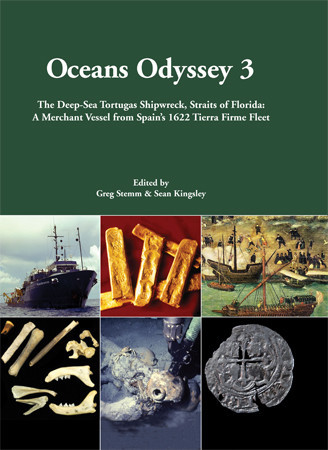
Format: Hardback
Pages: 201
ISBN: 9781782971481
Pub Date: 30 Apr 2013
Description:
In 1990 Seahawk Deep Ocean Technology of Tampa, Florida, commenced the world’s first robotic archaeological excavation of a deep-sea shipwreck south of the Tortugas Islands in the Straits of Florida. At a depth of 405 meters, 16,903 artefacts were recovered using a Remotely-Operated Vehicle. The wreck is interpreted as the Buen Jesús y Nuestra Señora del Rosario, a small Portuguese-built and Spanish-operated merchant vessel from the 1622 Tierra Firme fleet returning to Seville from Venezuela’s Pearl Coast when lost in a hurricane.
Oceans Odyssey 3 introduces the shipwreck and its artefact collection – today owned and curated by Odyssey Marine Exploration – ranging from gold bars to silver coins, pearls, ceramics, beads, glass wares, astrolabes, tortoiseshell, animal bones and seeds. The Tortugas shipwreck reflects the daily life of trade with the Americas at the end of the Golden Age of Spain and presents the capabilities of deep-sea robotics as tools for precision archaeological excavation.
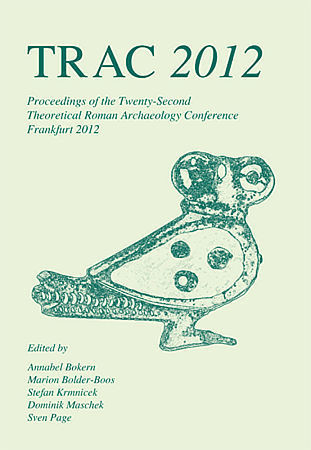
Format: Paperback
Pages: 220
ISBN: 9781782971979
Pub Date: 30 Apr 2013
Series: TRAC
Description:
The twenty-second Theoretical Roman Archaeology Conference (TRAC) was held at the Goethe-University Frankfurt am Main in spring 2012. During the three-day conference fifty papers were delivered, discussing issues from a wide range of geographical regions of the Roman Empire, and applying various theoretical and methodological approaches. An equally wide selection of subjects was presented: sessions looked at Greek art and philhellenism in the Roman world, the validity of the concept of ‘Romanisation’, change and continuity in Roman religion, urban neighbourhood relations in Pompeii and Ostia, the transformation of objects in and from the Roman world, frontier markets and Roman archaeology in the Provinces.
In addition, two general sessions covered single topics such as the ‘transvestite of Catterick’, metal recycling or Egyptian funeral practice in the Roman period. This volume contains a selection of papers from all these sessions.
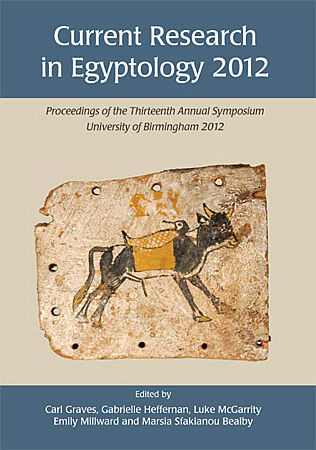
Format: Paperback
ISBN: 9781782971566
Pub Date: 19 Mar 2013
Series: Current Research in Egyptology
Description:
The thirteenth Current Research in Egyptology (CRE) conference was held from the 27th – 30th March 2012 at the University of Birmingham and once again provided a platform for postgraduates and early career Egyptologists, as well as independent researchers, to present their research. These proceedings for CREXIII represent the wide-range of themes that were offered by delegates during the conference, and cover all periods of Egyptian history; from Predynastic skeletal analysis through to Egyptology during the Islamic Middle Ages. These twelve papers include gender studies, analysis of Egyptian festivals, revisiting of chronological models, archaeological reanalysis of ancient landscapes, as well as social, historical and linguistic studies allowing a new appraisal of many aspects of Egyptian culture and history.
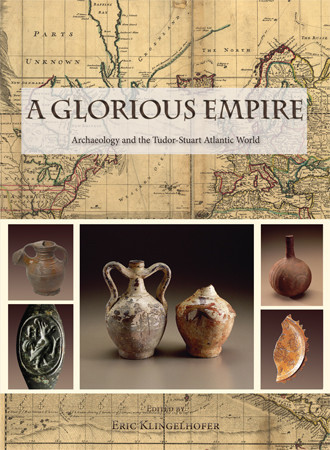
Format: Hardback
Pages: 272
ISBN: 9781842175101
Pub Date: 08 Mar 2013
Description:
Fifteen papers present the results of new research into various aspects of material culture and historical archaeology that reflect culture, trade and social interaction shared by Britain and Colonial America during the Tudor and Stuart periods. Recurrent themes include the use, significance and, in some cases, trade in specific types of pottery, including the ubiquitous stoneware flasks or canteens for sailors and solders on both sides of the Atlantic, and commodities such as wine and copper objects; the architectural history of manor houses and archaeology of plantations; aspects of the historical archaeology of Jamestown and Martins Hundred; the role of specific individuals in the development of Tudor-Stuart life and our new understand of a London destroyed the Great Fire based on Noel Humes rescue digs in a London destroyed by the Blitz. Overall the papers reflect the wide-ranging interests of Ivor Noël Hume, to whom the volume is dedicated.
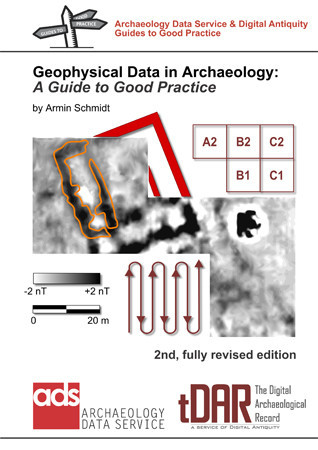
Format: Paperback
Pages: 88
ISBN: 9781782971443
Pub Date: 07 Mar 2013
Series: Archaeology Data Service & Digital Antiquity Guides to Good Practice
Description:
Anyone who has tried to archive archaeological geophysics data will have wondered what might be the most comprehensive and practical approach. This question is addressed by this Guide’s extensively revised 2nd edition, which systematically explores what should be included in an Archive, illustrated with relevant examples. A conceptual framework is developed that allows assembling data and meta-data so that they can be deposited with an Archiving Body.
This framework is also mapped onto typical database structures, including OASIS and the English Heritage Geophysics Database. Examples show step-by step how an Archive can be compiled for deposition so that readers will be able to enhance their own archiving practice. Geophysical data are sometimes the only remaining record of buried archaeological features when these are destroyed during commercial developments (e.g. road schemes). To preserve them in an Archive can therefore be essential. However, it is important that data are made available in formats that can still be read in years to come, accompanied by documentation that gives meaningful archaeological context. This Guide covers the creation of the necessary metadata and data documentation. There is no point preserving data if they cannot be used again; therefore this Guide is essential for anyone using geophysical data.
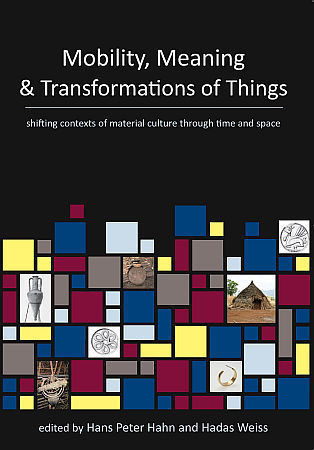
Format: Paperback
Pages: 176
ISBN: 9781842175255
Pub Date: 31 Jan 2013
Illustrations: b/w illus
Description:
Things travel around the globe: they are shipped as mass consumer goods, or transported as souvenirs or gifts. There are infinite ways for things to be mobile, not only in the era of globalisation but since the beginning of time, as the earliest traces of long distance trading show. This book investigates the mobility of things from archaeological and anthropological perspectives.
Material Objects are characterised by temporal continuity, embodying a prior existence with lingering effects. Yet the material continuity disguises the transformations they may undergo, which only become evident upon closer examination. Objects are in perpetual flux, leaving visible traces of their age, usage, and previous life. While travelling through time, objects also circulate through space, and their spatial mobility alters their meaning and use with respect to new cultural horizons. As objects transform through time and space, so does the value attributed to them. Mapping out itineraries of value in the realm of the material, allows us to grasp the nature of a given social formation through the shape and meaning taken on by its valued 'stuff'. It also provides insights into the nature of materiality, through the value ascribed to objects at a given point in time and space. This edited volume brings together studies of material culture, materiality and value, with regard to the mobility of objects, with the aim of tracing the ways in which societies constitute their valued objects and how the realm of the material reflects upon society.
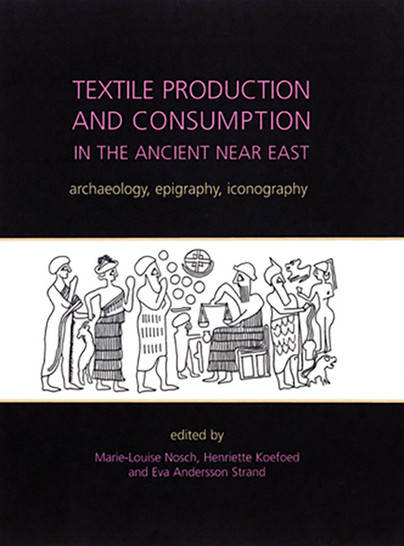
Format: Hardback
Pages: 200
ISBN: 9781842174890
Pub Date: 11 Jan 2013
Illustrations: 8 colour & 82 b/w illustrations
Description:
In the past, textile production was a key part of all ancient societies. The Ancient Near East stands out in this respect with the overwhelming amount of documentation both in terms of raw materials, line of production, and the distribution of finished products. The thirteen intriguing chapters in Textile Production and Consumption in the Ancient Near East describe the developments and changes from household to standardised, industrialised and centralised productions which take place in the region.
They discuss the economic, social and cultural impact of textiles on ancient society through the application of textile tool studies, experimental testing, context studies and epigraphical as well as iconographical sources. Together they demonstrate that the textile industries, production, technology, consumption and innovations are crucial to, and therefore provide an in-depth view of ancient societies during this period. Geographically the contributions cover Anatolia, the Levant, Syria, the Assyrian heartland, Sumer, and Egypt.
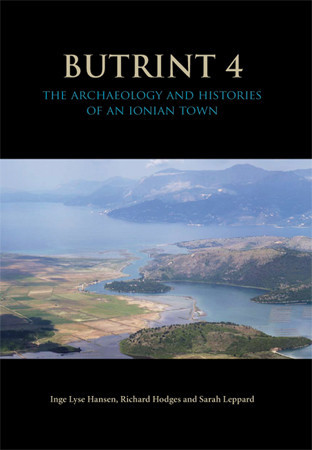
Format: Hardback
Pages: 250
ISBN: 9781842174623
Pub Date: 08 Jan 2013
Series: Butrint Archaeological Monographs
Illustrations: c.50 col & c.325 b/w illus
Description:
This richly illustrated volume discusses the histories of the port city of Butrint, and its intimate connection to the wider conditions of the Adriatic. In so doing it is a reading, and re-reading, of the site that adds significantly to the study of Mediterranean urban history over the longue durée . Firstly, the book proposes a new paradigm for the development-history of Butrint - based on discussions of the latest archaeological, historical and landscape studies from approximately 20 new excavations and surveys, together covering a temporal arch from prehistory to the early modern period.
Secondly, it examines how the perception of the city influenced the archaeological methodology of 20th-century studies of the site, where iteration and reversal were often being applied in equal measure. In this it asks important questions on the management of heritage sites and the contemporary role of archaeological practise. Inge Lyse Hansen is Adjunct Professor of Art History at John Cabot University and specialises in the visual and material culture of the Roman world. She has published on portraiture, funerary art and the use of role models and patronage and has edited several archaeological volumes. Richard Hodges is Scientific Director of the Butrint Foundation, a leading medieval archaeologist and the author of more than 20 books. Sarah Leppard has led or participated in more than 15 excavations in eight countries and has managed major excavations at Butrint.
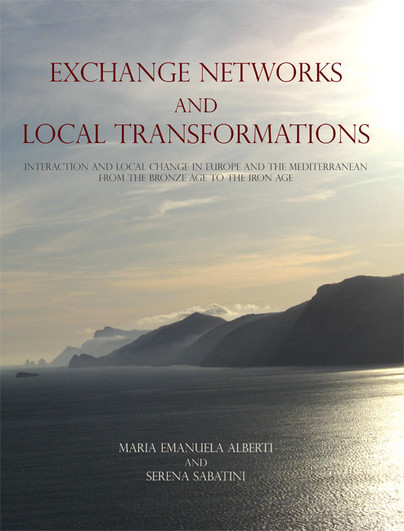
Format: Paperback
Pages: 160
ISBN: 9781842174852
Pub Date: 08 Jan 2013
Illustrations: b/w illus
Description:
Throughout the local Bronze and Iron Age, European and Mediterranean societies appear to have been involved in complex systems of exchange networks which invariably affected local customs and historical developments. Archaeological evidence suggests social and economic phenomena, cultural expressions and technological skills stemmed from multifaceted encounters between local traditions and external influences. Examples of cultural openness and transcultural hybridisation seem to be more of a norm than an exception.
The articles in the volume explore the dynamic relationship between regionally contextualised transformations and inter-regional exchange networks. Particular effort has been put in approaching the issue in a multi-disciplinary perspective. Continental Europe and the Mediterranean may be characterised by specific development and patterns of relations, but the authors draw attention to how those worlds were not alien to each other and illustrate how common interpretative tools can be successfully applied and a comprehensive approach including both zones adopted.
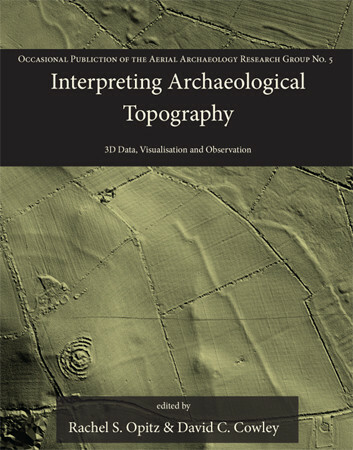
Format: Hardback
Pages: 288
ISBN: 9781842175163
Pub Date: 08 Jan 2013
Illustrations: 185 col illus
Description:
Airborne Laser Scanning (ALS), or lidar, is an enormously important innovation for data collection and interpretation in archaeology. The application of archaeological 3D data deriving from sources including ALS, close-range photogrammetry and terrestrial and photogrammetric scanners has grown exponentially over the last decade. Such data present numerous possibilities and challenges, from ensuring that applications remain archaeologically relevant, to developing practices that integrate the manipulation and interrogation of complex digital datasets with the skills of archaeological observation and interpretation.
This volume addresses the implications of multi-scaled topographic data for contemporary archaeological practice in a rapidly developing field, drawing on examples of ongoing projects and reflections on best practice.Twenty papers from across Europe explore the implications of these digital 3D datasets for the recording and interpretation of archaeological topography, whether at the landscape, site or artefact scale. The papers illustrate the variety of ways in which we engage with archaeological topography through 3D data, from discussions of its role in landscape archaeology, to issues of context and integration, and to the methodological challenges of processing, visualisation and manipulation. Critical reflection on developing practice and implications for cultural resource management and research contextualize the case studies and applications, illustrating the diverse and evolving roles played by multi-scalar topographic data in contemporary archaeology.
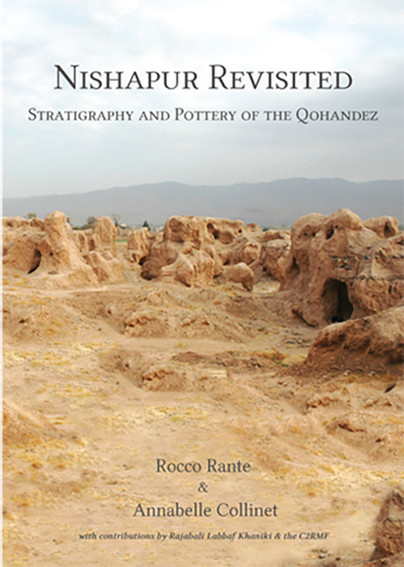
Format: Hardback
Pages: 144
ISBN: 9781842174944
Pub Date: 08 Jan 2013
Illustrations: 105 col illus.
Description:
Nishapur in eastern Iran was an important Silk Road city, its position providing links to central Asia and China, Afghanistan and India, the Persian Gulf and the west. Despite previous excavations there are many unresolved questions surrounding the site; when was the city founded? Is Nishapur a Sasanian city?
Was it founded by the Sasanian king Shapur I or II? The question of chronology of occupation and the ceramic sequence is also problematic particularly for late antiquity and the medieval period, as well as a complete topography of the site. The Irano-French archaeological mission at Nishapur (2004 to 2007) (CNRS-MAEE-Musée du Louvre) focused on the Qohandez, or citadel, the oldest part of Nishapur. Excavations were conducted in different areas of the mound, in order to address these questions. After an introduction to the site and the former American and Iranian excavations, this book presents the stratigraphy and the pottery of the site. The difficulties involved in establishing a precise history of the site, as well as the complexities of studying the pottery led to a program of analysis undertaken by the Research Centre of French Museums (C2RMF). Chemical and petrographic analysis, thermoluminescence (TL) dating and archaeomagnetism analysis as support to the TL results were done. A pottery database has been created regrouping the stratigraphical and laboratory analyses data, in order to manage and present an organised corpus of 1000 samples. The combination of the data from the stratigraphical and laboratory analyses gives an accurate and completely new chronology of the site. Moreover, the study also brought to light a new typological sequence of the ceramic, as well as new data about the pottery production at Nishapur.
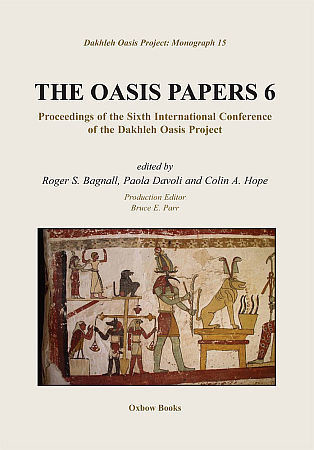
Format: Hardback
Pages: 512
ISBN: 9781842175248
Pub Date: 08 Jan 2013
Series: Dakhleh Oasis Papers
Description:
The Dakhleh Oasis Project is a long-term holistic investigation of the evolution of human populations in the changing environmental conditions of this isolated region in the Western Desert of Egypt. The Project began in 1978 and has combined survey and excavation to collect an extensive range of geological, environmental and archaeological data which covers the last 350,000 years of human occupation. This latest volume in the Monograph series publishing the results of the Project contains 41 papers with a wealth of new research and significant discoveries, from Prehistory, through Pharaonic and Roman times to the Christian period.
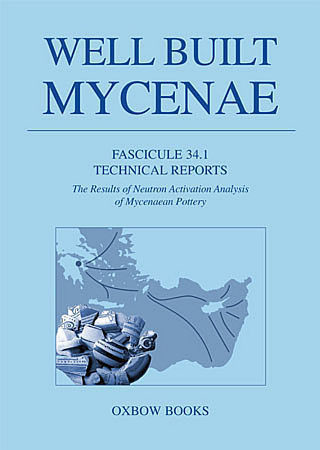
Format: Paperback
Pages: 65
ISBN: 9781842175286
Pub Date: 31 Dec 2012
Series: Well Built Mycenae
Description:
Since 1890 when Sir Flinders Petrie first realised the importance of the Aegean pottery he had found in Egypt further discoveries of these wares have been noted with more than superficial interest. Early studies, however, right up to the mid 20th century, had to be based on stylistic, and thus often subjective, criteria. It is only more recently with the development of a range of scientific techniques that it has become possible to make serious attempts to ascertain the exact sources of this imported pottery.
A key factor in this work has been the establishment of data banks by which to define the various possible sites of origin. Samples from Mycenae, as one of the key nodes of Late Bronze Age trade, were taken both as part of the initial programme of research by the Research Laboratory at Oxford and then in the wider projects carried out in the Laboratory of the University of California, Berkeley, by Professors Frank Asaro and Isadore Perlman and by the Department of Nuclear Chemistry of the University of Manchester. Though the results of these studies have been made public and widely used, the full details pertaining to the core area of the Argo-Corinthia have never been published. This fascicule of the Well Built Mycenae series presents for the first time the raw data as well as the statistical analyses based on it and assesses the impact of the various methods on the archaeological value of the research. Thus by giving an outline of the relation between these results and the on-going archaeological work at Mycenae and in the surrounding area we can see into which fields of study future work should be directed. Includes a DVD with accompanying material for 34.1 and all previous fascicules.
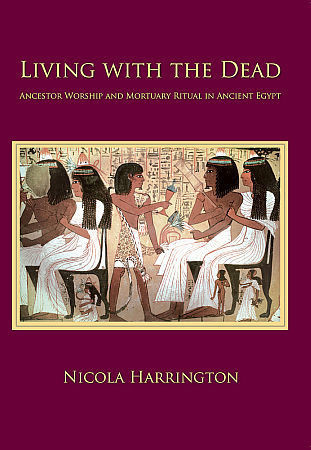
Format: Paperback
Pages: 208
ISBN: 9781842174937
Pub Date: 31 Dec 2012
Illustrations: 75 colour & b/w illustrations,
Description:
Living with the Dead presents a detailed analysis of ancestor worship in Egypt, using a diverse range of material, both archaeological and anthropological, to examine the relationship between the living and the dead. Iconography and terminology associated with the deceased reveal indistinct differences between the blessedness and malevolence and that the potent spirit of the dead required constant propitiation in the form of worship and offerings. A range of evidence is presented for mortuary cults that were in operation throughout Egyptian history and for the various places, such as the house, shrines, chapels and tomb doorways, where the living could interact with the dead.
The private statue cult, where images of individuals were venerated as intermediaries between people and the Gods is also discussed. Collective gatherings and ritual feasting accompanied the burial rites with separate, mortuary banquets serving to maintain ongoing ritual practices focusing on the deceased. Something of a contradiction in attitudes is expressed in the evidence for tomb robbery, the reuse of tombs and funerary equipment and the ways in which communities dealt with the death and burial of children and others on the fringe of society.


















